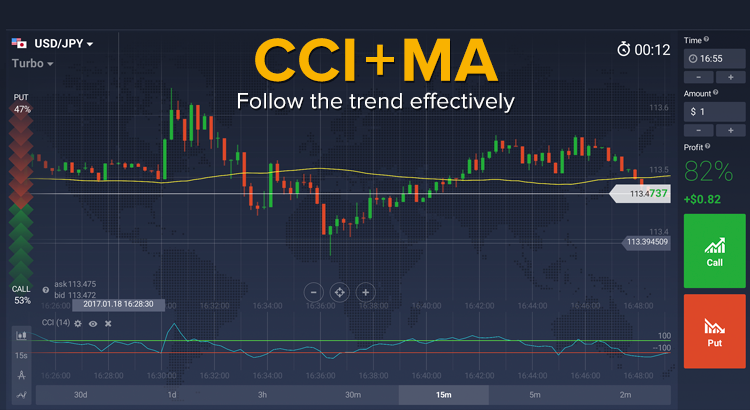
The high on the day of the sell signal becomes the initial stop-loss. Here is a simple system for trading with these directional movement indicators. The first requirement is for the ADX indicator to be trading above https://1investing.in/ 20. The signal remains in force if these low holds, even if +DI crosses back below -DI. Once the trend develops and becomes profitable, traders can incorporate a stop-loss and trailing stop should the trend continue.
Then, things turned around and the green line broke above the red DI line and the ADX started to pick up again. The uptrend then gained momentum as the ADX was pointing up and the green DI line stayed above the red DI line. Once the red DI line crossed above the green line, the trend was over (red vertical line).
ADX – Using The ADX Indicator To Find And Trade Trends
DMI is measuring up and down movement by smoothing price fluctuations. The Aroon indicator is measuring the time or periods since a high or low within the look-back period. In mean stock trader salary in india reversion strategies, a high ADX-reading may be used to enhance oversold signals in other indicators or conditions, since it indicates that the move leading down was a firm one.
When there are sudden breakouts from the normal price range, you can look to the ADX indicator to determine whether these are a one-off event, or a continuing trend. The Average Directional Movement Index (ADX) was developed by famed technical analyst Welles Wilder as an indicator of trend strength. As a commodity trader, Wilder developed the indicator for trading commodity futures. However, it has since been widely applied by technical analysts to virtually every other tradeable investment, from stocks to forex to ETFs.
Conversely, if the green line(+DI) is higher than the red line(-DI) that is generally an indication of a bullish trend. The larger the spread between the two primary lines, the stronger the price trend. If -DI is way above +DI then the price trend is strongly down.
The Average Directional Index (ADX) can help to reduce the number of possible trades, with the goal of narrowing down a list of trade ideas to provide potentially more profitable opportunities. Some versions of the average directional index will also show the +DMI and –DMI lines. It’s important to keep in mind that the average directional index is not a trend direction indicator, but an indicator of trend strength. A strong uptrend or a strong downtrend will both result in high average directional index values.
When + DI and -DI begin to converge again, this indicates the trend is gradually fading. The crossing of the +DI and -DI lines means that the market is in equilibrium (the buying and selling volumes are equal). If the lines diverge after crossing, it means that the balance of buyers and sellers is getting disturbed.
Stochastic Oscillator: Guide for Using Indicator & Best Settings
SharpCharts users can plot these three directional movement indicators by selecting Average Directional Index (ADX) from the indicator dropdown list. By default, the ADX line will be in black, the Plus Directional Indicator (+DI) in green and the Minus Directional Indicator (-DI) in red. This makes it easy to identify directional indicator crosses.
And as is often the case in mean reversion, sudden and prolonged moves in one direction tend to result in a market reversal. A lot of our trading strategies use ADX, and while you may use the default 14-periods, you definitely should try some other values as well. Most of the time we find that the 14-period IS NOT optimal and decide to go with settings as low as 3 up to perhaps 30 at the most. A long trade is taken when the +DI crosses above the -DI and an uptrend could be underway. Meanwhile, a sell signal occurs when the +DI instead crosses below the -DI.
ADX Calculation
Then, depending on the ADX level, we may decide to employ mean reversion or trend following strategies. For example, we might want to go long on a new breakout only if ADX is showing high readings, which signals that the trend is strong and healthy. To quantify the trend’s strength, the calculation of the Average Directional Index is based on a moving average of a price range expansion over a certain timeframe. Typically, the indicator is calculated for a 14-day period, although it may be implemented to any — including an hourly or weekly — chart. The Average Directional Index (ADX) is a popular technical analysis tool and a widely used three-line indicator.
Because of Wilder’s smoothing techniques, it can take around 150 periods of data to get true ADX values. Wilder uses similar smoothing techniques with his RSI and Average True Range calculations. ADX values using only 30 periods of historical data will not match ADX values using 150 periods of historical data. ADX values with 150 days or more of data will remain consistent. Adx indicator on alone does not signify whether the trend is Uptrend or Trend is Downtrend. We must sell at the next candle after the negative crossover and place the stop loss at a high of the previous candle.
Remember, you should have some trading experience and knowledge before you decide to trade with indicators. You should consider using the educational resources we offer like CAPEX Academy or a demo trading account. When you see the ADX signals and you want to place a trade, you can do so via derivatives such as CFDs.
Monthly Trading Strategy Club
Q32 has initiated Phase 2 trials in atopic dermatitis and alopecia areata. Therefore, figure out the optimal set of indicators and their combinations using demo retail investor accounts. You will find out at the end of the review whether my search for a new trend succeeded or if the price continued to move in a downtrend. And while ADX trading is in full swing, I will continue explaining the theoretical framework. Now, I will describe how the chart analysis works and open a trade. And while it’s in the market, I will continue the explanation.

In this instance, it would have been prudent to ignore a buy signal so close to this resistance zone. The index’s main line shows the trend strength – when buying volume exceeds selling volume and vice versa. If the index moves horizontally below level 20, the market is flat. If the index exits the 0-20% zone moving toward 100%, the rate of price change increases, i.e., the trend increases. The index value of 50-60% indicates the imminent end of the trend.
What is the ADX?
The Average Directional Index (ADX) is a specific indicator used by technical analysts and traders in order to determine the strength of a trend. It is for this reason that the average directional index is presented with three separate lines, symbolizing each indicator. Each line is used to help assess a trade and whether or not it should taken long or short, if at all. The ADX indicator on TradingView does not display the +DI and -DI lines by itself, but you can use the Directional Movement Index (DMI) indicator to see all three at the same time.
- One way is to use indicators and other chart techniques to supplement your overall assessment of the fundamentals of the global economy, the business cycle, and other factors relevant to your analysis.
- This book also includes details on Average True Range (ATR), the Parabolic SAR system and RSI.
- ADX can be applied to stocks as well as mutual funds, ETFs and futures.
- All you need to do is enter the price data in columns B, C, and D.
However, remember to experiment with the length and threshold values. We seldom find that the default settings work the best, and have used a wide range of settings in the past, in accordance with the market, strategy, and timeframe we’ve been trading. When it comes to trend following strategies, most people assume that a high ADX reading will help a great deal with filtering out false signals. The belief goes that a market that’s firm and decisive, will have a greater chance of continuing in the current direction.
The ADX as a Divergence Indicator
To understand why, consider a hypothetical stock that is rising in price. Would you rather own this stock if the uptrend were strengthening or weakening? From a technical analysis perspective, a rising stock in a strong uptrend may suggest greater likelihood of continuing to rise than the same stock whose uptrend is showing signs of weakness. Here, there is also a crossover of the dotted lines with the signal of a trend change, but our indicator has already bounced off the level 40 and now ADX drops gradually.
ADX gets nod to tap into Upper Austrian gas – The West Australian
ADX gets nod to tap into Upper Austrian gas.
Posted: Tue, 15 Aug 2023 07:00:00 GMT [source]
The DI+ and DI- line move away from each other when price volatility increases and converge toward each other when volatility decreases. Short-term traders could enter trades when the two lines move apart to take advantage of increasing volatility. Swing traders might accumulate into a position when the lines contact in anticipation of a breakout. The other condition will be that the 5-period RSI is below 20, which signals that the market has become oversold, and is due for a short term pullback. There are many trading strategies that use the ADX, either as the main entry trigger, or just as a filter.
Conversely, if -DI is well above +DI, this confirms the strong downtrend or short positions. Overall, the ability to identify strong trends is extremely valuable to traders. By using ADX along with price, you can identify trending conditions and make more profitable trades with less risk involved. In any case, the ADX stock indicator should always be looked at alongside price. Price movements are the main signals to watch, but ADX can help by pointing out the strength of these trends.
